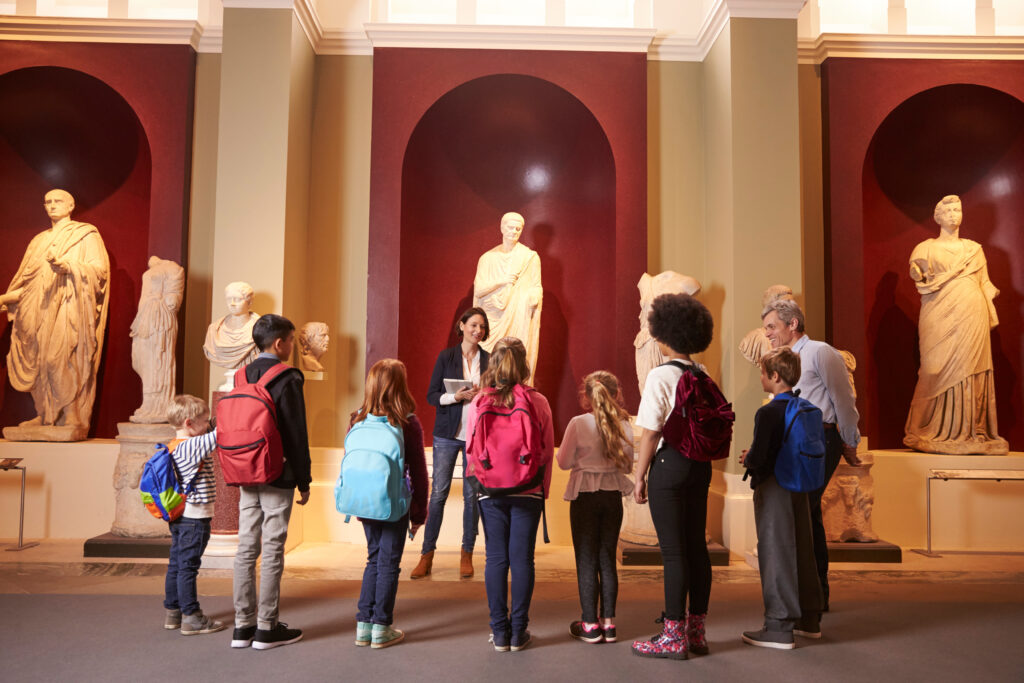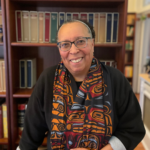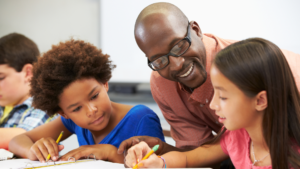
In their recent white paper, “Too Essential to Fail,” co-authors Karen Pittman and Merita Irby argue their case for an education system overhaul centering curricula that expose students to an array of community resources, including museums, libraries, parks, youth clubs, sports leagues and so on. Professionals and community volunteers who occupy those spheres also impart real-world knowledge.
That type of collaborative ecosystem of school-to-community instruction increasingly is a preferred path to improving kids’ learning and creating more overall equity in education, say Pittman and Irby, researchers, policy analysts and partners at Knowledge to Power Catalysts.
The firm’s managing partner, Katherine Plog Martinez, asked her colleagues about what drives the research and policy proposals in “Too Essential to Fail: Why Our Big Bet on Public Education Needs a Bold National Response.”
Their conversation was edited for length and clarity.
THE CONVERSATION

This new paper on the future of public education is a bit of a departure from your focus on youth development and community youth programs. What prompted it?

As diehard youth development experts, we were over the moon when Education Reimagined commissioned us to pull together the preponderance of evidence from disparate K-12 sources that makes us confident that now is the time to create what we’re calling a “new education architecture.”
“Too Essential to Fail” devotes an entire section to summarizing the convergent opinions of parents, youth, employers and teachers calling for bold changes in public education. There is a hunger to accelerate shifts away from the innovation constraints that are commonly acknowledged features of conventional schools: standardized curricula and assessments; uniform block scheduling; large, closed campuses; promotion based on seat-time rather than mastery; compliance-focused classroom management.
But there is also resistance to completely dismantling the public education system because it provides every learner access to the instructional floor critical to our democracy. Schools, even those using very conventional teaching and learning approaches, have benefits that families value. Those benefits start with but are not limited to instruction in the 3 Rs and the provision of safe, supportive, reliable care during most of the workday.

So what is the solution if schools are too essential to fail, but too entrenched to change?

Even before the pandemic, parents and students were finding many of the kinds of learning opportunities they value outside of schools: after-school programs; maker-space collaboratives; libraries and museums; summer camps; sports leagues; and summer employment programs, just to name a few.
And it is interesting that teachers agree that these enrichment experiences are important. Only 13% of them believe these experiences are “nice but not necessary.” Most teachers agree with parents that the programs provide flexible, identity-affirming, interest-driven learning experiences that teachers rarely have the freedom and time to provide during the school day.
The experiences involve systems — library and parks and recreation systems, out-of-school time provider networks — that are also being pushed to rethink their conventional operating models.
None, however, is accountable for providing 13-plus years of free, safe, weekly academic instruction for every child in its geographic area. Assuming this level of accountability is a big leap, even for innovators who are currently offering school-day instruction.
This is why we believe it is important to bring school and community-learning systems administrators and educators together to acknowledge the constraints and benefits of the learning opportunities offered by other systems. Those other systems have seeded innovation but do not have formal responsibility for school attendance and achievement. Schools and community learning systems must both shift their operating models.

In the paper, you state that learning ecosystems don’t have centers. Explain what you mean.

A learning ecosystem is a constellation of intertwined and entangled elements … people, places and possibilities found across, within and between schools and out-of-school settings.
Community learning ecosystems exist in every community, but they are highly inequitable. In “Some Assembly Required,” researchers estimated that parents spend $200 billion a year on supplemental learning materials and experiences for their children. Affluent parents have seven times the spending power of low-income ones.
But the solution is not to just give parents, with their limited time and expertise, the funding to take even more responsibility for their children’s education. That would only exacerbate the inequities.
The solution is to engage all parties to reimagine what education means … To collect evidence about how, when, where and with whom learning happens. To understand the disparities among groups. To explore how schools can adjust and adapt their current functions in ways that more deeply engage with community organizations and residents.

School-community partnerships have been around for a long time. How is what you are proposing different?

The century-old dominance of schools — the only system with the funding and the mandate to define, deliver and certify essential learning — over others in the learning ecosystem has created a huge power imbalance.
Schools are overburdened with responsibility. Others in the ecosystem, however, have been given few incentives to work together to assume shared responsibility for providing reliable, affordable, enriching experiences to every child, every day.
Achieving equitable learning ecosystems requires going beyond helping schools improve academic outcomes. We level the playing field between schools and the community organizations around them by broadening the definitions. Learning involves the academic but also the cognitive, social, emotional, civic. Learning happens increasingly in real-life settings, not just schools. Teachers and school counselors provide instruction and guidance but so do youth workers, creative artists, civic leaders.
Schooling in the country and, indeed, throughout much of the world, is at a critical juncture. In its report, ““Back to the Future of Education,” the international Organisation for Economic Cooperation and Development outlined four scenarios:
- Schooling extends its current status as the only institution that can grant academic credentials.
- Schooling is outsourced and privatized, generating lots of alternatives.
- Schools retain core functions like registering and graduating students but, in addition, focus on and recognize how real-world competencies broaden the places and spaces where learning for academic credit happens;
- Schools disappear because learning assessment and certification are driven.

All of these are possible. But only the third one promises to improve learning quality and address current inequities. This one, in our estimation, may be the hardest to achieve — because it requires coordinated shifts from all systems.



1 Comment
insightful